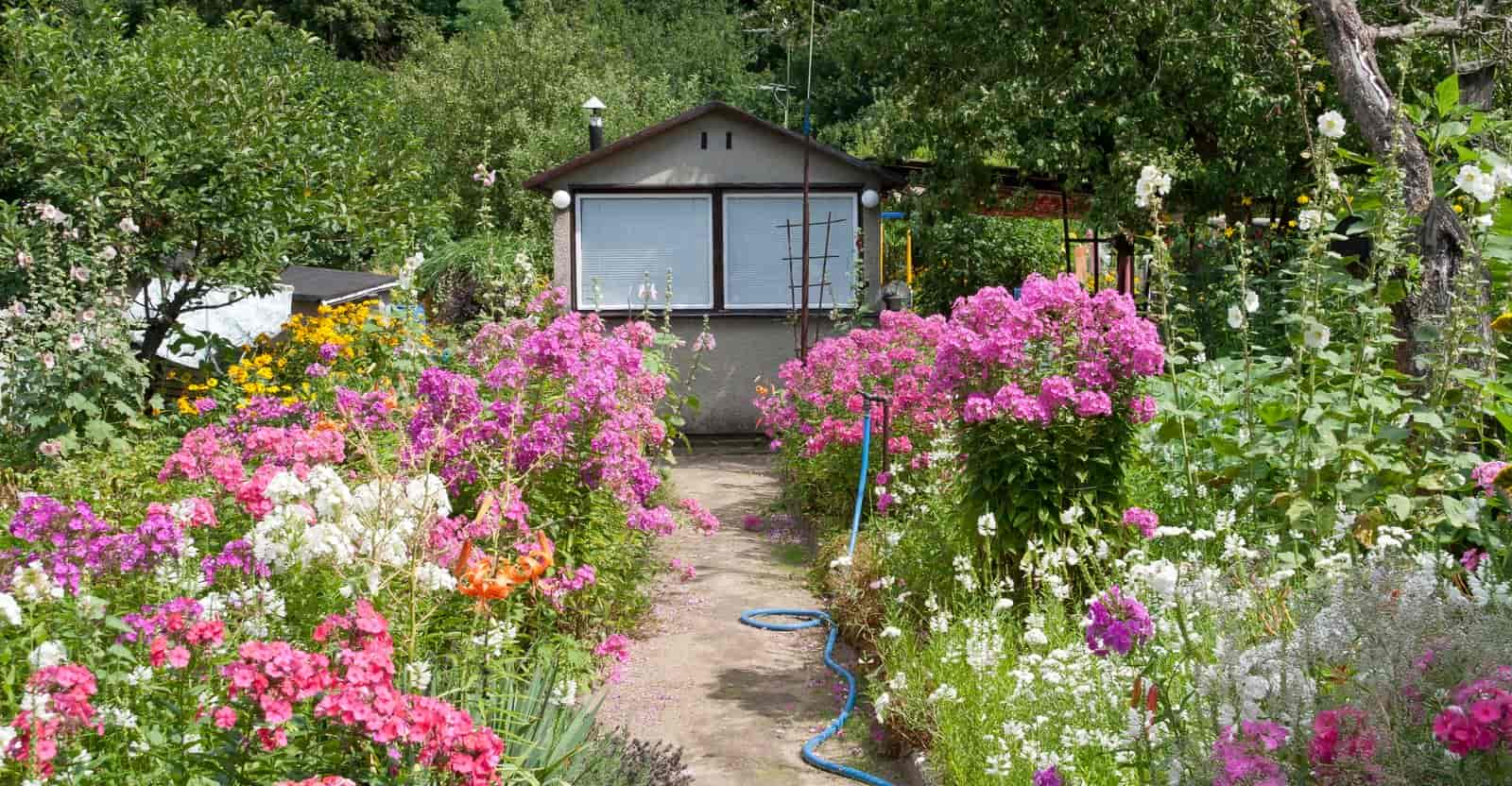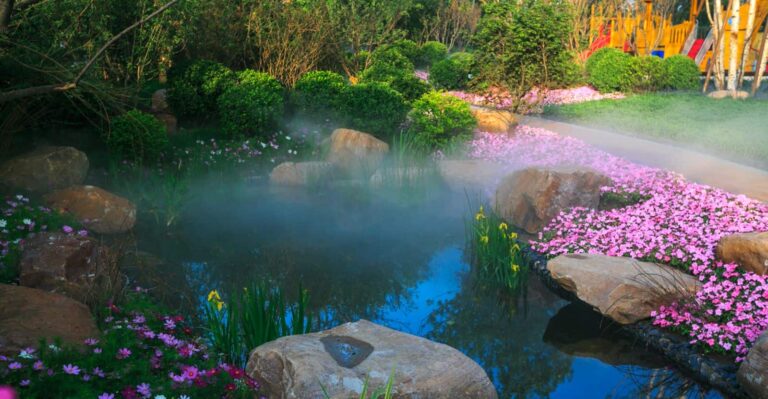Amazon has put together some great Home Gift Deals – save money and get your shopping done at the comfort of your home! Click here to see deals on Amazon
Have you ever looked enviously at a neighbor’s garden and wished you had the same beautiful garden? But you do not have space or energy to maintain the same garden level.
Well, here is the idea, you should start with a cottage garden.
The origin of the cottage garden was in England with a more practical emphasis on the usefulness of the garden. People in England planted different types of edible and medicinal plants for their personal use.
To pollinate these edible plants, they planted flowers to attract insects and bees. These were also known as English cottage gardens.
These days we do not have those urgent requirements to grow the perfect cottage garden in the English style. But you can design and develop cottage gardens for aesthetic purposes.
This article will show you how.
Why Cottage Garden
We hear more and more nowadays that “I’d love to be able to garden more; I just don’t have the time.” If that’s, you then welcome to the cottage garden world where you can have your cake and eat it too.
For beginners, the cottage garden has lots of benefits. You will always have a unique garden as no two-cottage garden will be the same. There are multiple combinations you can put together to differentiate yourself.
Even if you try to get inspiration from your neighbor’s design, you will still have a unique garden. It is effortless and inexpensive to get started with a cottage garden. You can start with a few patches of cottage garden seeds to get going.
If you are short on time or do not have the required skill and energy to maintain a well-designed garden, then it will be your forte.
Now I don’t want to make you think that it will be super easy to build a cottage garden. As there are some challenges with it.
If you are a beginner with less experience in gardening, then things can get messy very quickly. Since there are lots of different varieties and types of plant, the plants can grow wherever it wants.
You have to be careful that plants follow your cottage garden design principle. We will talk about cottage garden design principles later in the article.
You also have to be watchful to trim down overgrown plants as you do not want one plant to cover your whole garden. This will be more relevant as you try to find more space for the new plant.
Planning A Cottage Garden From Scratch
When you are getting started with a cottage garden, it is essential that you plan it carefully, so you like the end result.
If you go without proper planning, then you may waste your time, energy, and money on growing a garden that you do not like.
Here is the step-by-step direction to start planning your cottage garden from scratch.
Assess The Site
When you are starting with it, you should begin by assessing the site first. You may already have some mature trees and shrubs along with a variety of structures and buildings.
Carrying out a thorough site review will highlight problems areas as well as plants and features you want to keep. Start by removing the plants that you don’t want to keep.
Don’t destroy all the plants but dig any bulbs, perennials, and small shrubs which are in good shape. You can then give it away to neighbors, friends, or families or replant it elsewhere.
When cleaning your site, you may have a wide range of materials for disposal. You can compost plant waste and use it in your garden. You can also rent a shredder to chip larger, woody branches which will make excellent mulch.
Have a good understanding of the type and structure of your soils. Plants need differing conditions, and knowing what you have allows you to make a better choice.
You can improve or change a particular aspect of the grounds, but it won’t be practical to replace all the topsoil. Based on the types of soils, you can choose plants that thrive in that soil condition.
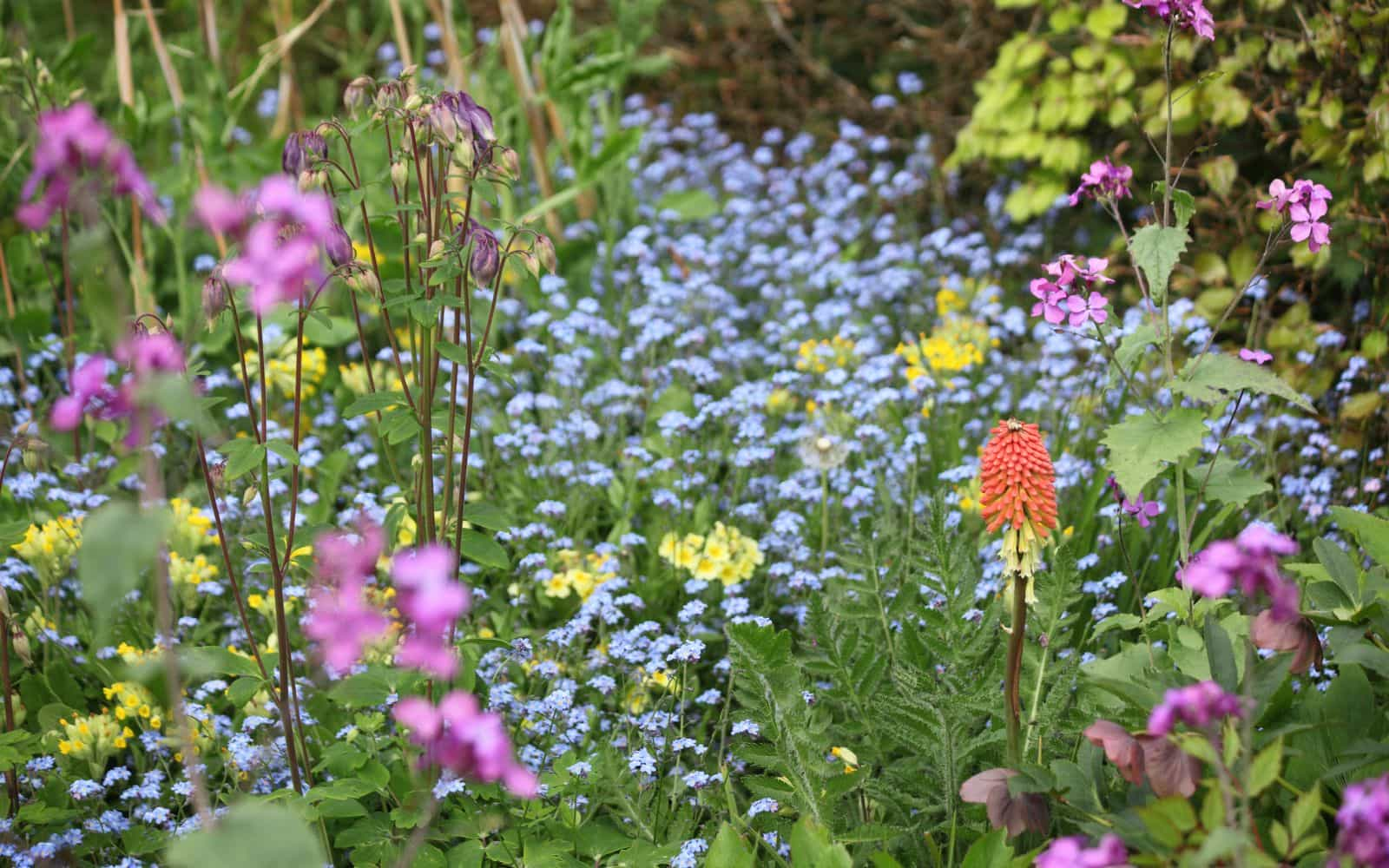
Create A Cottage Garden Design
The next step is to decide on the look of your cottage garden layouts. You have to know whether you want a modern cottage garden, vintage cottage garden, or low-maintenance cottage garden.
You can then plan your garden by keeping the end design goal in your mind. For a limited space look for cottage garden design for small gardens where you use small and narrow size plants.
There is various software in the market that can let you design the garden with a simple click of a mouse button. But if you are looking for the most straightforward and cheapest DIY solution, then you can start with a sketch over the photo of your garden.
To do that, take a photo of your garden from as many different angles as possible. This will help you see the plants and layout you already have in the garden.
Then place a sheet of tracing paper over the garden picture and sketch out your design ideas. This will give you the most realistic view of your garden once you finished.
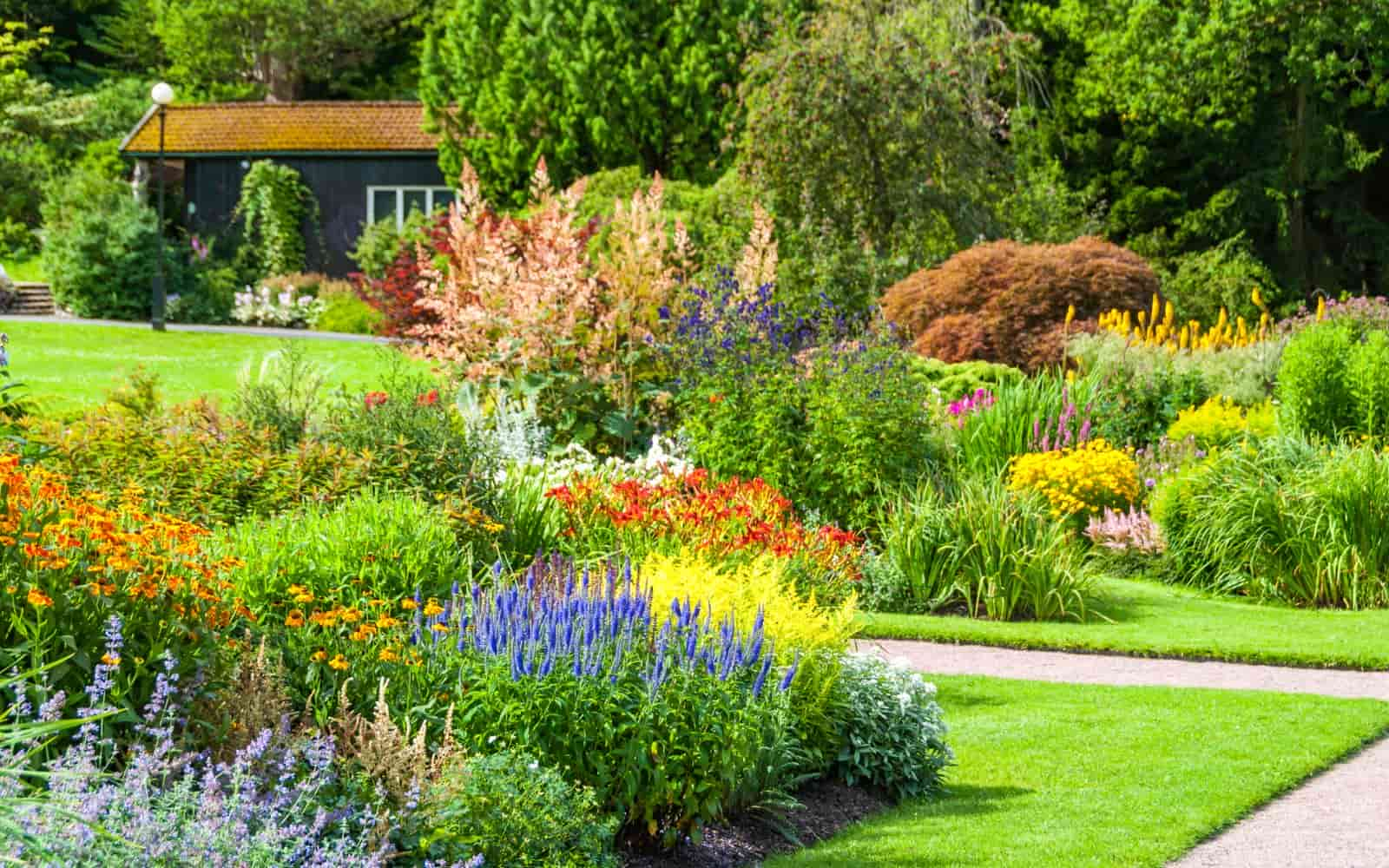
Plants For The Cottage Garden
You can choose to plant any seasonal plant in your garden. But for a long-lasting and low-maintenance cottage garden, you should plant perennial plants. You can also mix it with summer-flowering bulbs.
Best Cottage Garden Flowers
Here is the list of my top plants for the modern cottage garden style. It also includes a small perennial garden plant that you can use in any regular garden.
Astilbe
Astilbe has tall stems with feathery flowers and comes in various shades of pink, red, and white. You can plant it in areas where you get partial to full shade. Plant it in lower areas where you have a problem with water getting collected as Astilbe thrives in the moist soil.
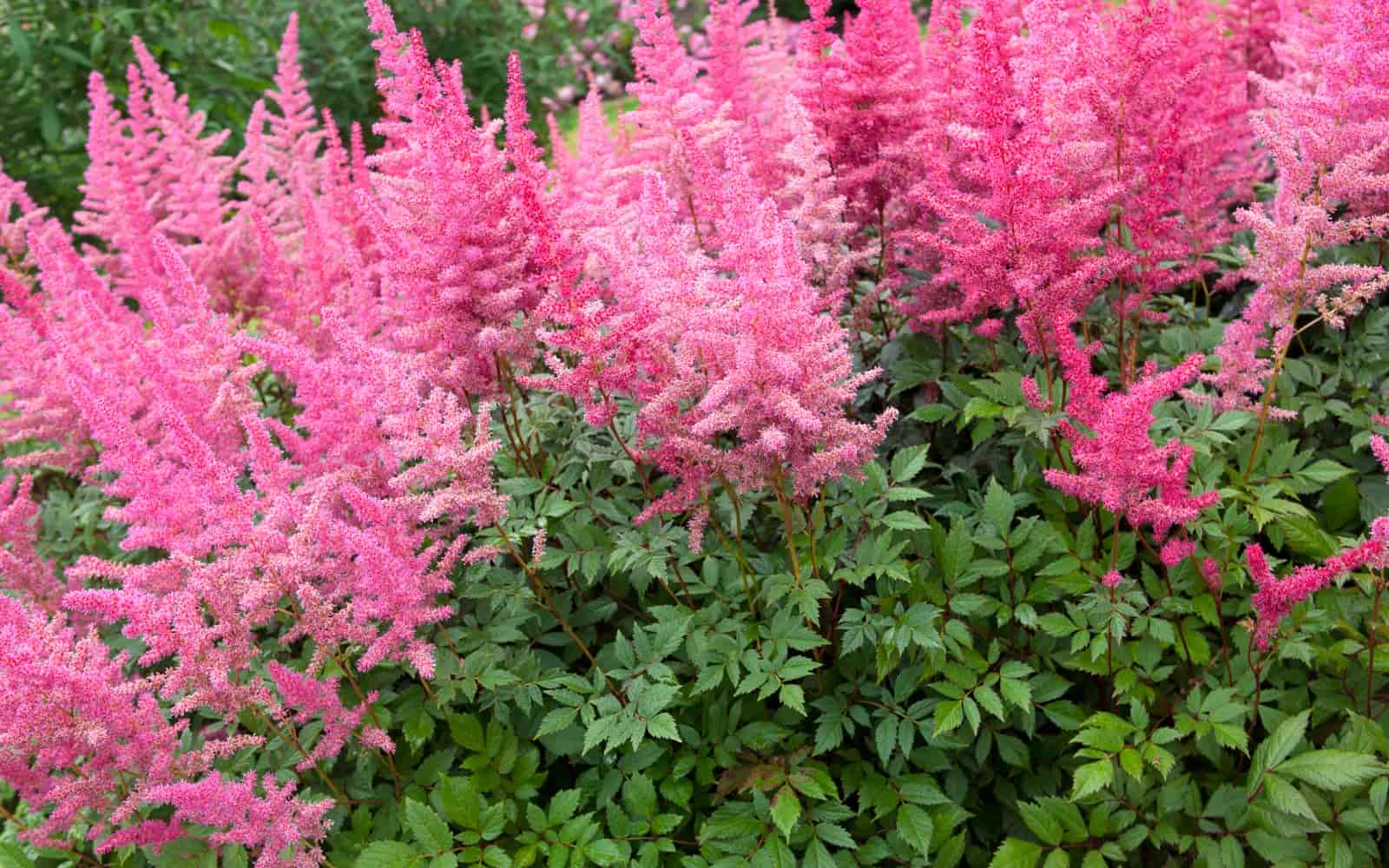
English Lavender
English Lavender gives the summer and Mediterranean looks. It has gray-green foliage and bee, butterfly-attracting purple flower wand. It grows 2ft to 3ft tall and spread from 2ft to 4ft.
Bleeding Heart
The bleeding heart does well in full or partial shade and requires moist, sandy soil. It has a distinctive heart-shaped flower in pink or white color which hangs down from the stem. It is perfect for the overhanging part of the garden.
Day Lilly
Daylilies grow well in almost any condition. In summer it produces new blooms every day in a wide range of colors. There are large varieties of daylilies but my favorite is “Stella d’Oro.” It blooms with brilliant yellow color.
Columbine
Columbine flowers in spring and come in a variety of colors and heights. You can plant it in any type of soil type and in the sun or partial shades.
Coral Bells
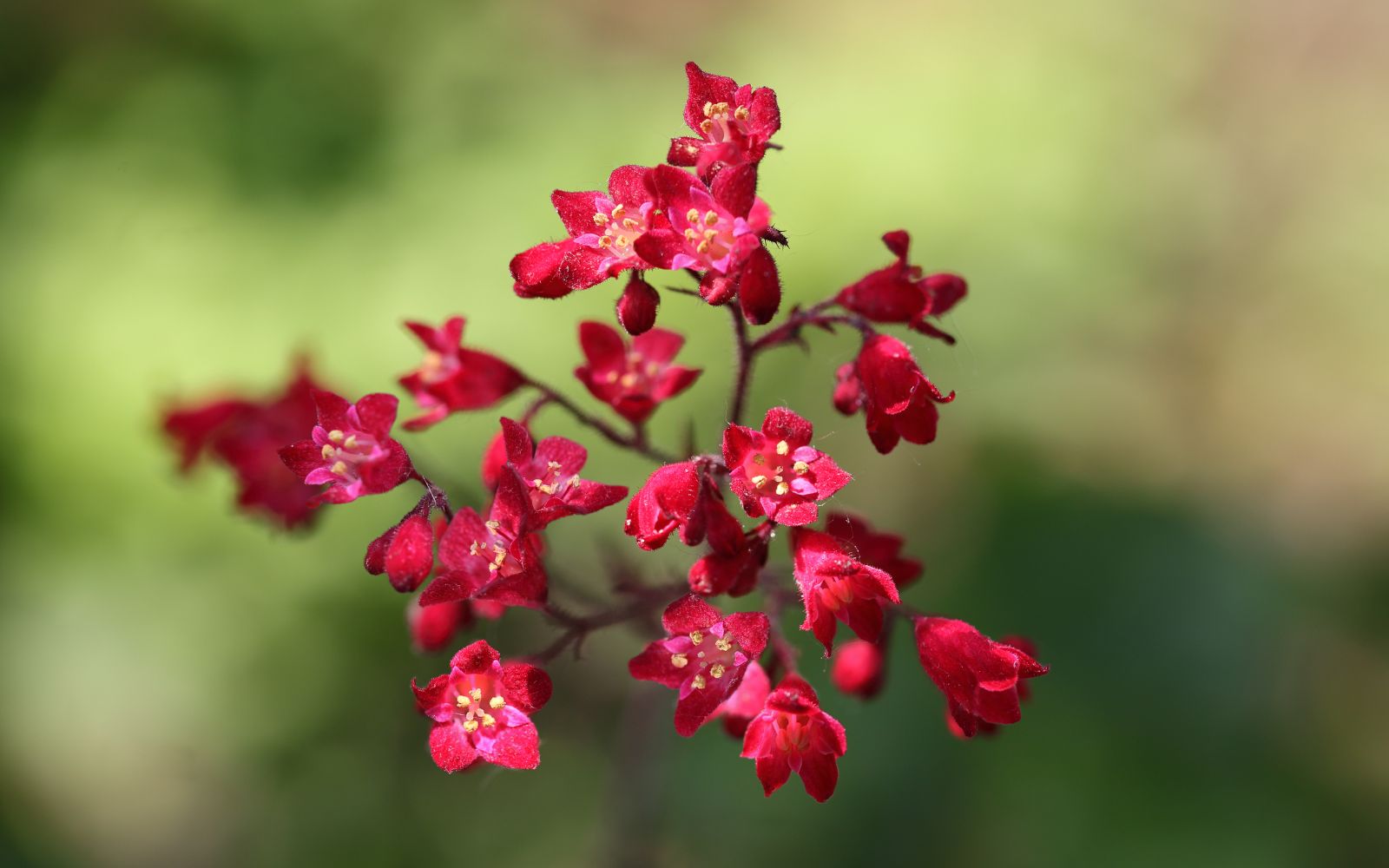
Coral bells give you a distinct look at the garden. Its leaves range from green to chartreuse, deep purple, and orange rust. It remains actives in all seasons.
Best Cottage Garden Climbers
Clematis Armandii
It is easy to grow a healthy plant that blooms early at the start of spring. It comes in two varieties, “Snowflake” and “Apple Blossom.” It’s a white, lightly scented vine and white flower gives its distinctive look. Its stem can be easily twined around a trellis or fence.
Honeysuckle
Honeysuckle has hardy shrubs and vine which is easy for climbing. It is easy to care for, and you can choose over 180 different varieties. It requires clipping and trimming due to its fast growth.
Chinese Wisteria

Another famous and low-maintenance climber cottage garden plant is Chinese Wisteria. It is easy to grow and hang on fences, arbors, backyard sheds, and on the building walls.
Due to its fast-growing and dense shade, it is an excellent plant for trellises, porches, and gazebos.
Best Cottage Garden Border
Arborvitae
These are a perfect choice plant to use as a cottage garden border or use as a privacy screen or hedge.
It grows in tall, dense green foliage. You can trim it easily depending on the layout of your garden.
Cordyline “Red Star”
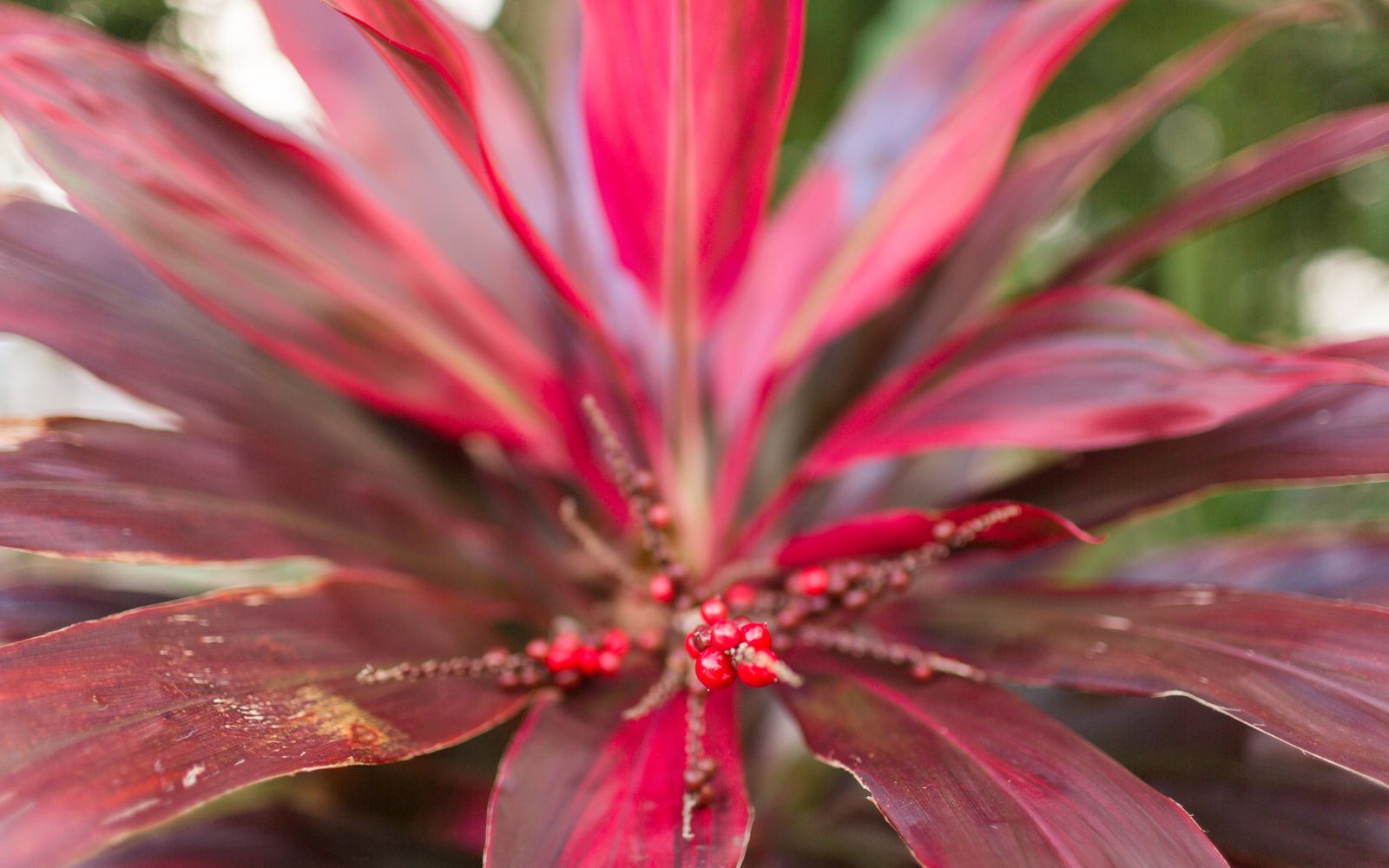
This is a foliage plant with long, bronze-red sword-like, stiffly arching leaves. When it matures, it bears scented white flowers. It grows up to 10 – 30 ft tall and 3 – 12 ft wide. It grows in full or partial sun.
Yucca Filamentosa “Bright Edge.”
It has stiff, lance-shaped leaves with dark green color and striking wide margins. In summer, tall spikes of white flowers tower above them. It grows up to 2.5ft tall and 5ft wide.
Chamaerops Humilis
It is a slow-growing evergreen palm bearing with dramatic sharp-pointed, slender leaflets. If you are planting it in a colder area, then it will need winter cover. It grows up to 5ft tall and requires full sunlight.
Euphorbia Characias
It has upright stems bearing evergreen, narrow, gray-green leaves. These leaves are joined in spring by domes of cup-shaped lime-green flowers with maroon eyes. It grows up to 4ft tall and needs full sunlight.
Evergreen Shrubs For Cottage Garden
Camellia Williamsii “Donation”
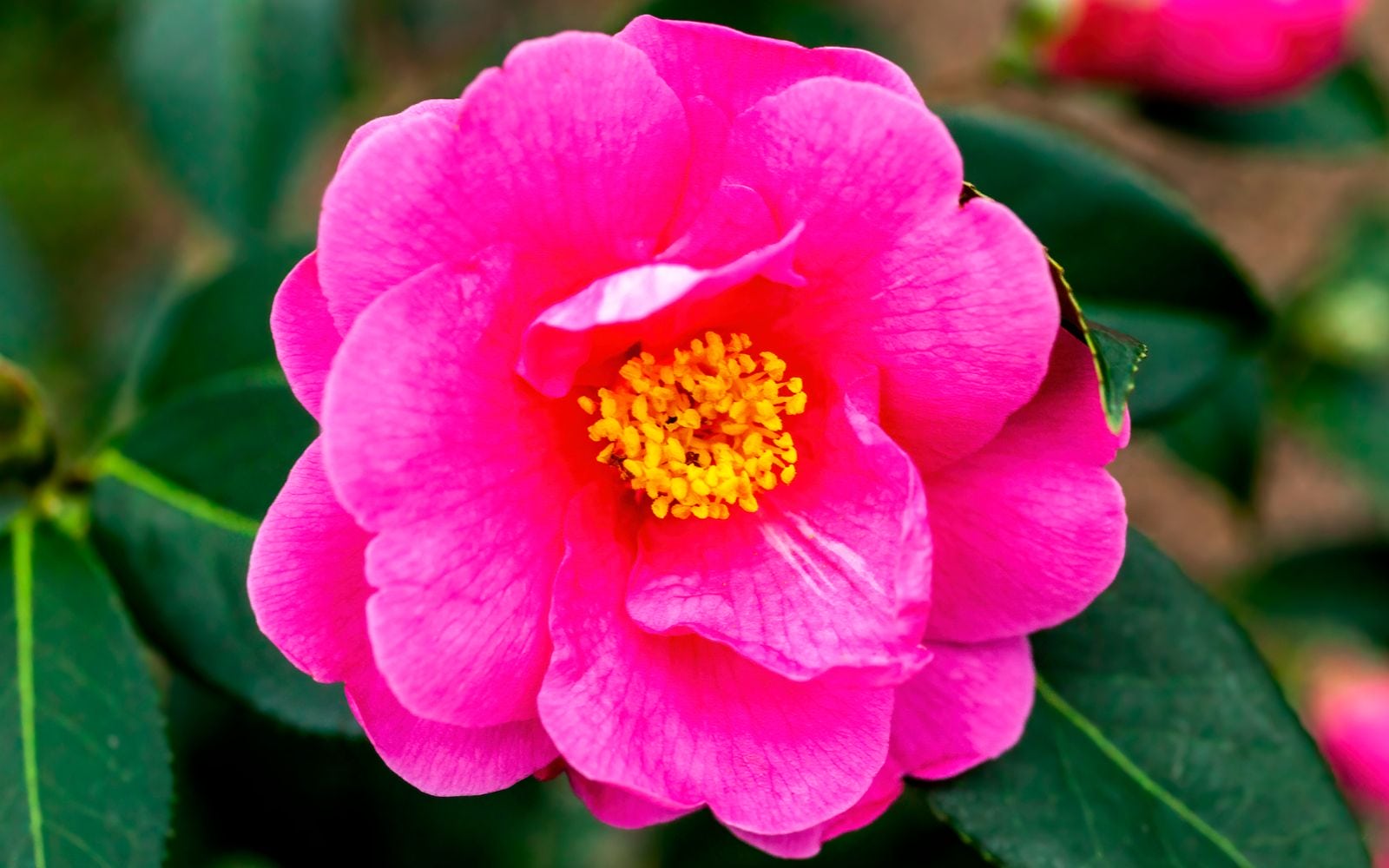
This evergreen, shade-loving shrub bears semi-double, vibrant pink blooms through mid-and late springs.
It requires acid soil and is suitable for growing in a large pot. It grows up to 15ft tall and 8ft wide. It grows in partial sunlight.
Choisya Dewitteana “Aztec Pearl”
It is an elegant white, orange blossom flower with narrow dark green leaves. Its fragrant clusters of white, star-shaped flowers emerge from pink buds in late spring to early summer. It grows 8ft tall and needs full sunlight.
Hypericum “Hidcote”
The arching branches of “Hidcote” are covered with lance-shaped leaves. It blooms in large quantities throughout summer in clusters of golden yellow flowers. It grows up to 4ft tall and 5ft wide.
Disanthus Cercidifolius
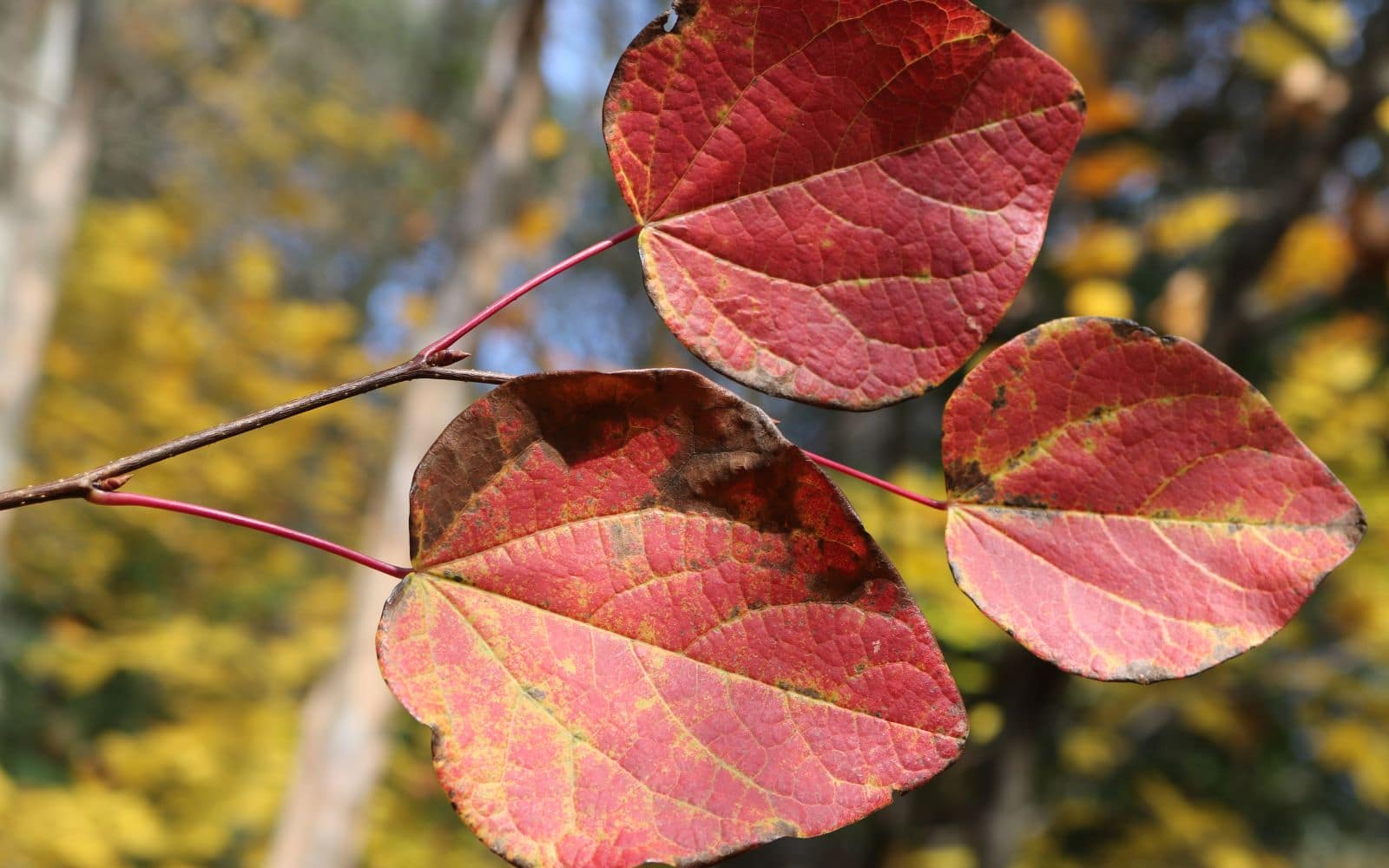
This round, deciduous shrub produces dark red flowers in fall. The heart-shaped leaves turn shades of yellow, orange, purple, and red. It grows up to 10ft tall and needs partial sunlight.
Rhus Glabra
This beautiful slender and bushy shrub has reddish-purple stems. Its deep blue-green leaves turn red in fall and bear red fruits. It grows up to 8ft tall and 6ft wide.
Viburnum Bodnantense
It is a deciduous shrub and has fragrant flowers that are borne on the bare stems. It grows with flowers ranging almost from white through pale to dark pink. It goes up to 10ft tall and 6ft wide.
How To Take Care Of A Cottage Garden
Whether you are planning for an English cottage garden or looking for modern cottage garden plants, you have to follow some fundamentals of good cottage garden layouts and designs.
Here are a few to get started.
Invest In Good Soil
Many people who are new to gardening, don’t realize the importance of having good soil. Most likely when you are digging for a new garden bed, you have to amend the soil. To modify the ground, you have to add nutrient-rich soil to your garden.
When choosing soil to add to your garden, we recommend at least 8 inches of good organic matter in the ground. Also check that soil is screened and shredded to filter out rocks, sticks, and other things that lower the soil quality.
Select Sturdy Garden Plants
When you are building a cottage garden, you will be planting several plants together close. This will make plants compete with each other for resources and space. Make sure your plants get along well with each other and don’t die off quickly.
Plant In Groups
To make a cohesive bunch look of the garden, start planting with different types of plants in a small group of three or five plants. Going in excess or low will make your garden not look perfect.
Mulch
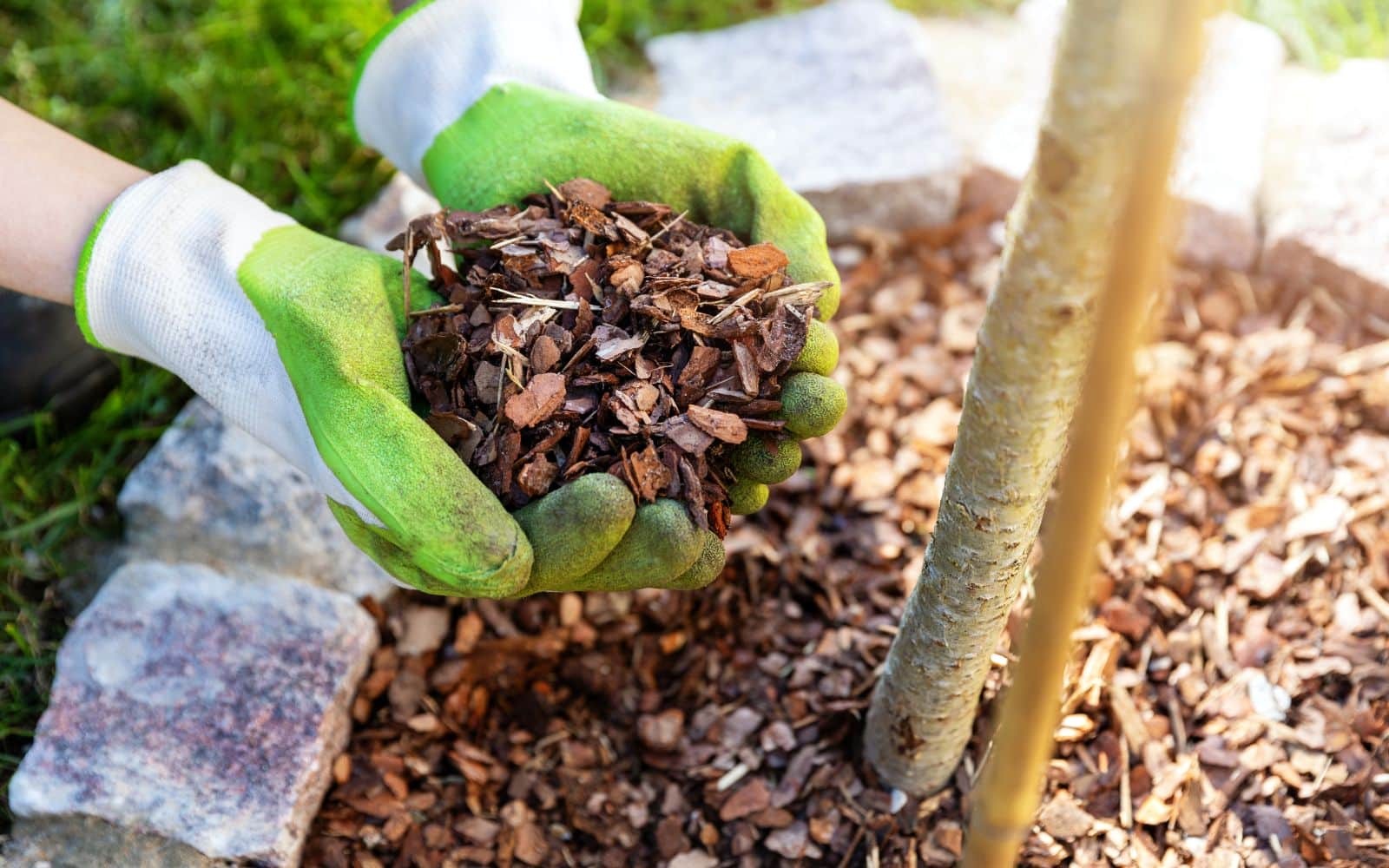
It is essential that you mulch your garden with organic materials like bark or compost. You can buy mulch from garden stores, or if you had an existing garden and cut down trees, then you can rent a shredder to get your own mulch.
Mulch not only gives a vintage cottage garden look but also helps reduce weed growth and hold soil moisture.
No Staking Plants
You should avoid having plants that need staking. If you must have to plant which needs staking, then try to plant it either in a group of most two plants. You can also plant staking plants at the front where it will be easier for the plant to get staked.
No Overstuffing
Just because you are building a cottage garden does not mean that you can cram as many plants as you want in a small space.
Overstuffing of plants will make several fragile plants either not grow to maturity or die early. On top of that, you may not have a lovely-looking cottage garden as it will be a mismatch of crowded plants.
Plan Out Edibles
If you want a vintage cottage garden look and want to plant edible plants such as vegetables and fruit, then decide out earlier what you want to plant. Don’t just run to the garden center and grab the vegetable plants that look cool or have pretty pictures.
Make a note of the type of plant you want to grow and pay attention to how wide and tall the plant will grow. Then depending on the layout of your cottage garden and the space available, you should choose to plant your edibles.
Protect Your Cottage Garden From Diseases And Pest
It can not be denied that at some point your beautiful cottage garden will come under the attack of some type of plant disease and pest. Although you cannot wholly end it, you can take actions to limit the damage.
The best way is to keep the soil nutrients fertile and well-drained. Adding compost to your cottage garden will help plant roots to grow fast and stable, so they can resist disease and attack from pests.
Pruning
Pruning the large, overhanging branches from mature trees, shrubs, and bushes will make your cottage garden look good. Plus, it will allow the sunlight to pass through for the benefits of smaller plants and improve air circulation.
Companion Planting
Companion planting prevents insects from attacking your plants. This is more applicable for planting edible plants.
For example, if you are planting leafy plants such as lettuce, then you should plant radishes nearby as it will make bugs eat radishes first.
This will give your lettuce time to grow. If you are planting tomatoes then also plant marigolds as companion plants which helps repel the bunch of insects.
Keep Pets Away
Pets such as cats can ruin your well-crafted cottage garden. Cats get attracted to the exposed areas of the garden as a huge litter box.
To make sure that pets don’t ruin your garden you should cover open areas with coarse mulch or stones.
You can also plant some unpleasant smelly plants that not only repels cats but also other furry creatures like rabbits.
Cottage Garden Design Inspiration
Use Plants As A Natural Fence
A cottage garden with a border defines the layout of the garden and makes it look good. For edge, you can use either wood or iron fence, but to keep all things natural you can use plants to define borders and dense plants for privacy.
Think Geometry
The basic shapes of square, rectangle, diamond, and circle have endless variations. You can make any combinations to get modern cottage garden design looks.
The current trend in contemporary cottage design uses the clean lines in design heavily with minimal but dynamic plants and open outdoor space.
For a Vintage cottage garden look, you can use English perennial borders, blowsy plantings, and rustic-looking vintage decorations.
Use Succulents
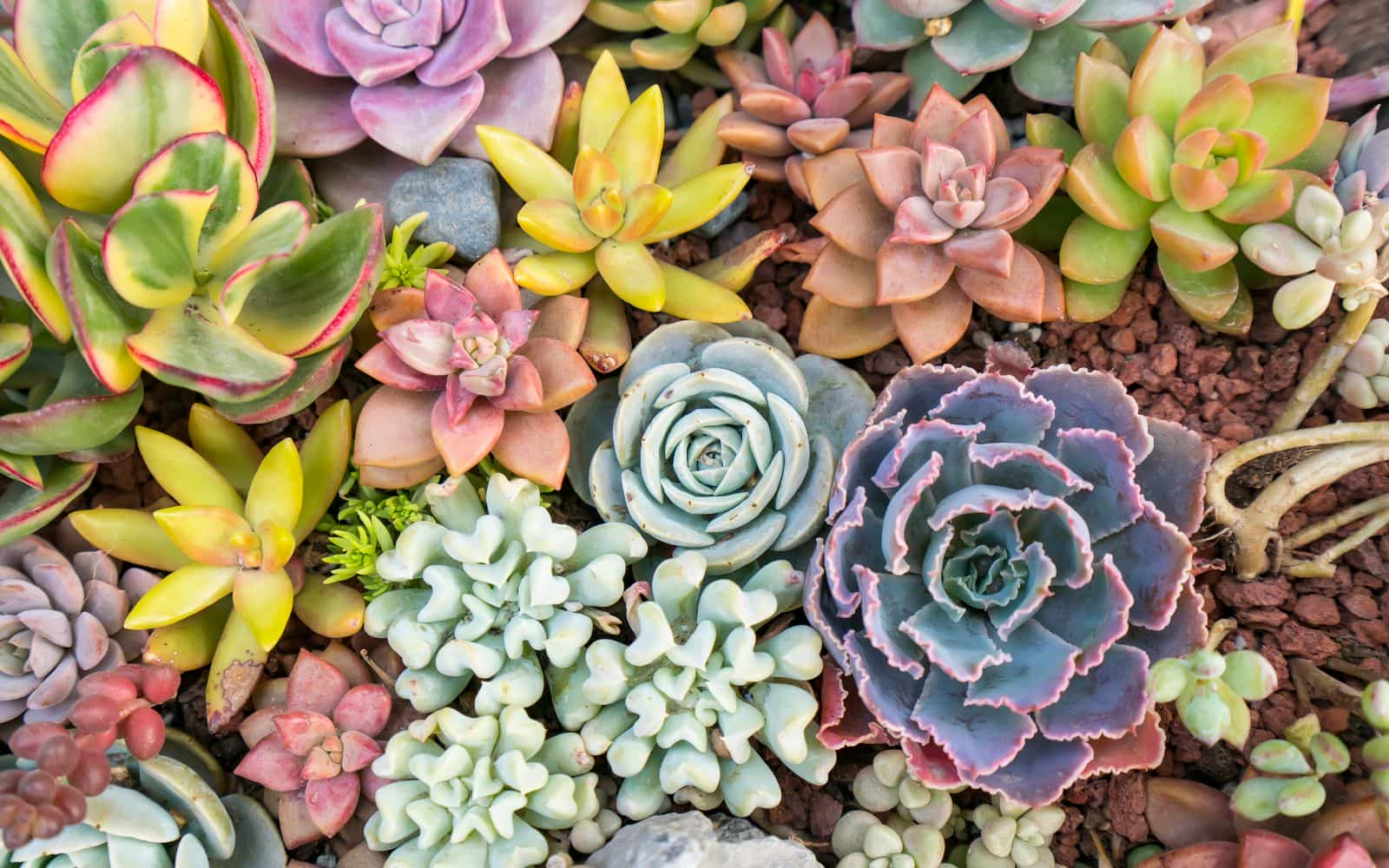
You can use succulents anywhere in your cottage garden. These robust and very diverse plant comes in a wide array of colors, textures, and shapes.
Succulents are low-maintenance plants, and they don’t need watering, dividing, or fertilizing. But succulents need good water drainage.
Use Pebble Mosaic
For your pathways, don’t use plain cement laid pathway. But you can choose well-crafted small pebbles mosaic to introduce pattern and texture at ground level.
No Mow Garden
No mow garden is becoming a new trend in urban cottage garden design. No mow garden eliminates the plants that need mowing, staking, or spraying. It has no hedges that need tight trimming to look good.
You can place well-crafted lovely stone paths and a patio in the back for smooth, comfortable sitting.
Allow Plants Edge To Fall Over
It is a different kind of experience to walk under the umbrella of flowers. It is calming and soothing and makes you feel relaxed.
This is why you should plant climbing shrubs and plants and let it fall over downward which creates the aura of divine beauty.
Wall Shrubs
In your garden, if you have a wall to cover then don’t merely paint it but use wall shrubs to your advantage. Wall shrubs are versatile plants that are perfect for decorating small gardens. These are useful where space is tight or to cover large structures and screens.
Decorating Structures
You can use decorating structures to soften the hard lines of the pergola, arch, fence, or shed. By using a veil of braided stems with textured foliage, and flowers and fruits of all seasons you will get a beautiful looking wall.
For support, wire up twiners, and ensure your structure will take the weight of heavy-vines of the plant.
Fragrant Flower
What could be better in a garden which looks not only enjoyable but also smells good?
You have various choices of flowers that you can add to your garden to get a refreshing and pleasing smell of nature. Add it to your garden so you can sit and relax in the perfect fragrance of pleasantry.
Use Statues
The use of statues breaks the monotony of your garden and will give an artistic look to your garden.
Many people use Gnome and other architectural pieces to decorate their garden. You can also use the fountains in the garden to get the dramatic and pleasant look of water flowing through the statute.
Cottage Garden Seating Area
When planning your cottage garden, design some seating areas for your guests to enjoy the beauty. The seating area may depend on the size of your garden.
You can either use natural rocks or brick for the seating area or use contemporary chairs and tables. Regardless of the choice of the seating area, place the seating area where you get the full view of your garden.
Lure Pollinators
Who does not like to look at a multi-colored butterfly or bee flying around in their garden? It brings you close to nature, and these small friendly insects help to pollinate your flowers.
Add Tall Plants
You should add tall plants to the garden borders. It makes you define the boundary of your garden and also makes your visitor move their eyes around to explore the full beauty of the garden.
This even breaks the uniformity in the size of your garden and makes your yard look prominent and tall.
Bring Cottage Garden In Focus
Photographers and movie makers use large backdrops to bring focus to the main object. You can use a similar design principle in your cottage garden.
You can use backdrops in your gardens such as hedges, rustic fences,s or walls to bring the attention back to plants or shrubs. These large backdrops also help add vividness and diversity of appearance to your garden.
Keep Natural Contours
It is inevitable that your garden will have its own natural contours. And you may design your garden in a way to make these contours to your advantage.
For example, if you have a little hilly slope in your yard then rather than making it flat, you can add stairs that will make it look different.
Irregular Shaped Garden Beds And Path
You may add irregular-shaped garden beds and paths which will make your garden look natural and not man-made. These non-uniform and irregular paths will make your visitors explore all parts of your garden.
You may also add diversity to your pathway by including various pathway ideas for a cottage which includes a combination of soft and hard surfaces such as gravel or wood chips and concrete. These are low maintenance pathways, unlike grass pathways which require regular mowing.
Cottage Garden Frequently Asked Questions
Q. What is a cottage garden style?
A. Cottage garden style consists of the use of a non-traditional approach to gardening. It uses dense and little crowded plants with a combination of flowers, shrubs, hedges, and edible plants.
The cottage garden style has evolved, and there is various design choice to choose from. Many people want the minimalist urban and modern cottage garden style look. While some still prefer the vintage cottage garden style.
Q. What is an English cottage garden?
An English cottage garden style consists of the use of flowers, shrubs, and edible plants grown for personal use. English cottage garden had more emphasis on growing vegetables and herbs than the aesthetics of the garden.
The root of the English cottage garden lies in the needs of earlier times where people grow their vegetables and crops for personal use. The herbs were grown as natural remedies for illness and ailments.
Q. When to plant cottage garden seed?
A. We recommend planting more perennials for cottage gardens as it is easier to grow and required less maintenance.
You can start planting perennial cottage garden seeds from the start of early April to the end of June. Most cottage garden seed needs either full or partial sunlight.
By planting seeds in summer, you will have less risk of frost, and sunlight gives the seeds the best chance for germination and growth.
Over To You
Designing and planting a cottage garden is a combination of both art and plant science. You may need some experimentation to get the garden which you fell in love with.
It comes with patience and getting more information. We hope that the information in the article will help you get started with your cottage garden journey.
If you like the information, then share it with your friend and family. For any suggestions or any tips which you would like to share then write in the comment below.

